Key Features
- High resolution, monochrome BSI CMOS camera with 102 MegaPixel and highest quantum efficiency with extremely low readout noise.
- Sensor: Sony BSI IMX461 Sensor, Pixel size 3.76μm x 3.76μm
- Sensor size: 44 x 33 mm, image diagonal 55 mm
- AD conversion: unaltered, true 16 bit (65,536 grayscale)
- Readout noise: 1e- to 3.7 e- (depending on readout modes)
- Data interface: USB 3.0
- Internal image memory: DDR 3, 1 GBy
- Full well: up to 720 ke- depending on readout mode at high dynamic range
- Quantum efficiency: max. 90% at 450 nanometers
- Dark current noise: about 0.003e-/pixel/sec at -20°C
- Amplifier glow: Zero
- Noise reduction: user selectable
- Image readout: 4 different modes, user selectable
Description
QHY461M PH - especially for ambitious amateur astrophotographers
The monochrome QHY461 PH (Photo) is a completely new development of the larger, scientific camera of the monochrome model QHY461 PRO. It has a more compact body and does NOT have the scientific features of the QHY 461 M/C PRO, BSI Cooled Scientific Cameras (various versions available) . These include the two 2 x 10 GB fiber interfaces, GPS timing, programmable FPGA and the external trigger input. An optional additional water cooling is also not available.
Native 16 bit A/D: The new Sony sensor has native 16-bit A/D on-chip. The output is real 16-bits with 65536 levels. Compared to 12-bit and 14-bit A/D, a 16-bit A/D yields higher sample resolution and the system gain will be less than 1e-/ADU with no sample error noise and very low read noise.
BSI: One benefit of the back-illuminated CMOS structure is improved full well capacity. This is particularly helpful for sensors with small pixels. In a typical front-illuminated sensor, photons from the target entering the photosensitive layer of the sensor must first pass through the metal wiring that is embedded just above the photosensitive layer. The wiring structure reflects some of the photons and reduces the efficiency of the sensor. In the back- illuminated sensor the light is allowed to enter the photosensitive surface from the reverse side. In this case the sensor’s embedded wiring structure is below the photosensitive layer. As a result, more incoming photons strike the photosensitive layer and more electrons are generated and captured in the pixel well. This ratio of photon to electron production is called quantum efficiency. The higher the quantum efficiency the more efficient the sensor is at converting photons to electrons and hence the more sensitive the sensor is to capturing an image of something dim.
Zero Amplify Glow: This is also a zero amplifer glow camera.
TRUE RAW Data: In the DSLR implementation there is a RAW image output, but typically it is not completely RAW. Some evidence of noise reduction and hot pixel removal is still visible on close inspection. This can have a negative effect on the image for astronomy such as the “star eater” effect. However, QHY Cameras offer TRUE RAW IMAGE OUTPUT and produces an image comprised of the original signal only, thereby maintaining the maximum flexibility for post-acquisition astronomical image processing programs and other scientific imaging applications.
Anti-Dew Technology: Based on almost 20-year cooled camera design experience, The QHY cooled camera has implemented the fully dew control solutions. The optic window has built-in dew heater and the chamber is protected from internal humidity condensation. An electric heating board for the chamber window can prevent the formation of dew and the sensor itself is kept dry with our silicon gel tube socket design for control of humidity within the sensor chamber.
Cooling: In addition to dual stage TE cooling, QHYCCD implements proprietary technology in hardware to control the dark current noise.
Multiple Readout Modes are special for QHY 16-bit Cameras (QHY600/268/461/411). Different readout modes have different driver timing, etc., and result in different performance. See details at “Multiple Readout Modes and Curves” Part.
Random change thermal noise suppression function
You may find some types of thermal noise can change with time in some back-illuminated CMOS cameras. This thermal noises has the characteristic of the fixed position of typical thermal noise, but the value is not related to the exposure time. Instead, each frame appears to have its own characteristics. The QHY600/268/461/411 use an innovative suppression technology that can significantly reduce the apparent level of such noise.
UVLO Protection
UVLO(Under Voltage Locking) is to protect the electronic device from damage caused by abnormally low voltages.
Our daily life experience tells us that the actual operational voltage of an electrical device must not significantly exceed the rated voltage, otherwise it will be damaged. For such precision equipment as cameras, long-term work at too low input voltage can also be detrimental to the working life of the camera, and may even make some devices, such as power manager, burn up due to long-term overload. In the all-in-one driver and SDK after 2021.10.23 stable version, the camera will give a warning when the input voltage of the camera is below 11V.
Specifications
| Model | QHY461PH |
| Image Sensor | SONY IMX461 BSI CMOS Sensor |
| Pixel Size | 3.76um x 3.76um |
| Color / Mono Version | Mono Only |
| Image Resolution | 11760 × 8896 |
| Effective Pixels | 102 Megapixels |
| Effective Image Area | 44mm x 33mm |
| Sensor Surface Glass | AR+AR Multi-Coating Clear Glass |
| Full Well Capacity (1×1, 2×2, 3×3) | 50ke- / 200ke- / 450ke- in Standard Mode 80ke- / 320ke- / 720ke- in Extend Full Well Mode |
| A/D | 16-bit (0-65535 greyscale) for 1X1Binning18bit in 2X2 19BIT in 3X3 20BIT in 4*4 software Binning |
| Sensor Size | TYPICAL 3.4inch |
| Read Noise | 1e to 3.7e (in HGC mode) |
| Dark Current | Approx 0.003e/pixel/sec @ -20C |
| Exposure Time Range | 50us – 3600sec |
| Frame Rate | 2.7FPS @ 8BIT 1.3FPS@16BIT on USB3.0 2.7FPS @ 16BIT 6FPS @ 14BIT on 10Gigabit Fiber |
| Shutter Type | Electric Rolling Shutter |
| Computer Interface | USB3.0 |
| Filter Wheel Interface | 4PIN QHYCCD CFW Port |
| Built-in Image Buffer | 1GByte DDR3 Buffer |
| Cooling System | Dual Stage TEC cooler(-35C below ambient with air cooling). |
| Anti-Dew Heater | Yes |
| Telescope Interface | – |
| Optic Window Type | AR+AR High Quality Multi-Layer Anti-Reflection Coating |
| Back Focal Length | 32.5mm |
Curves
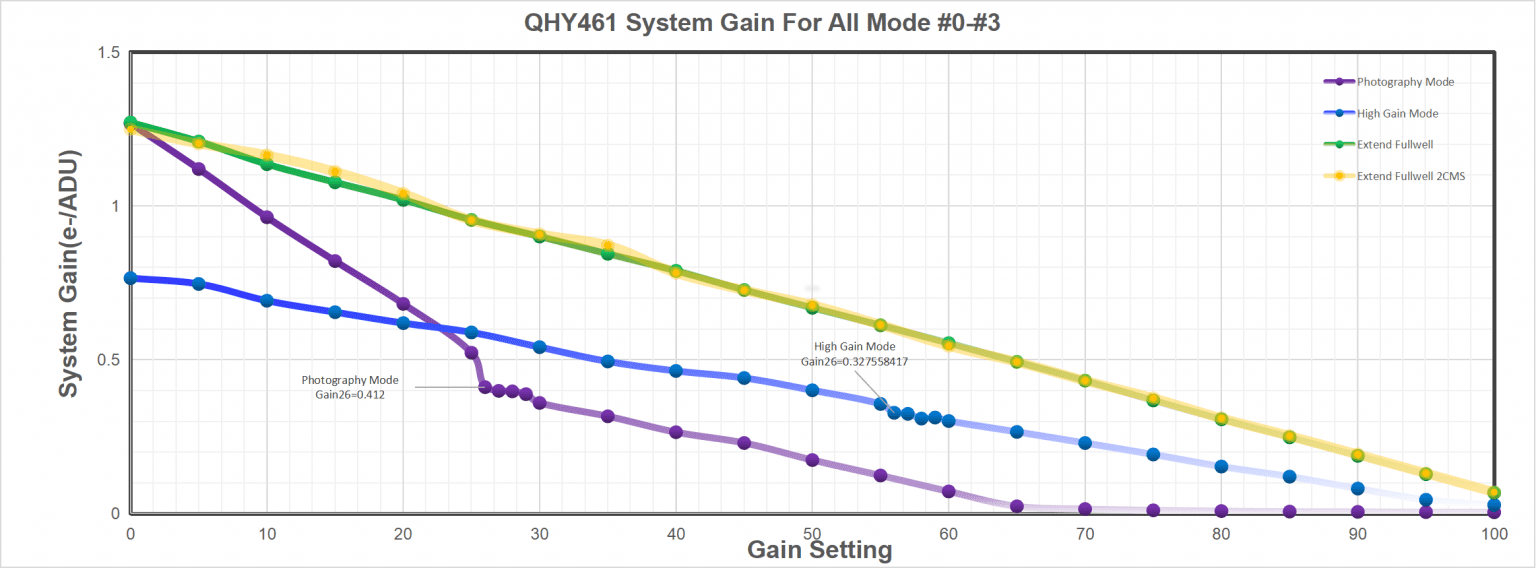
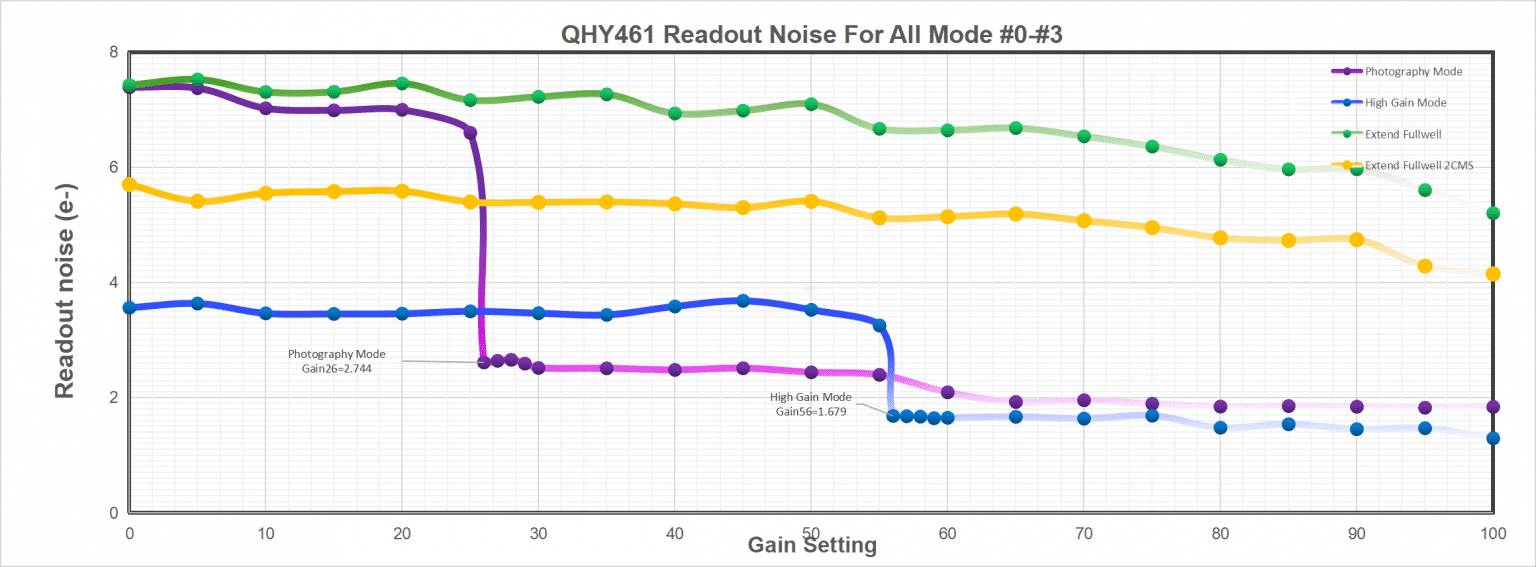
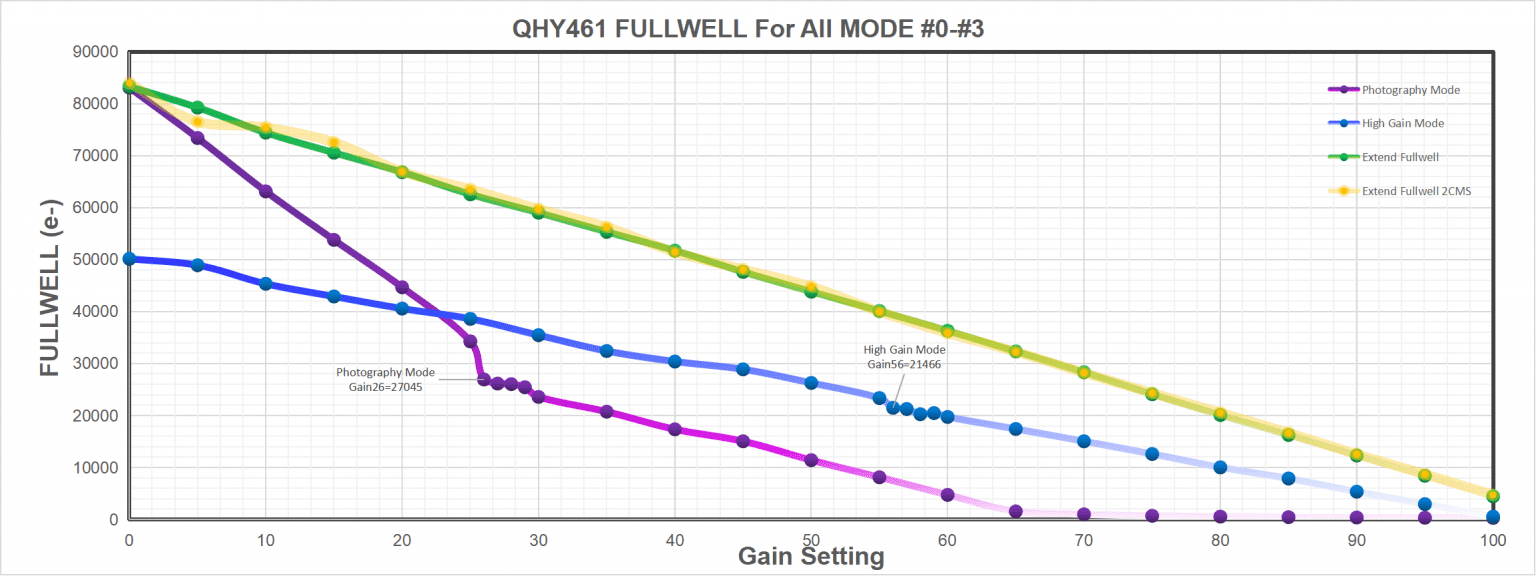
Mechanical Dimensions
User Images
IC 1396 Elephant’s Trunk Nebula in Bi-Color palette (cropped) Capture by Denis Salnikov with QHY461 camera and AG Optical 14.5″ iDK telescope.
Reviews
Recommended
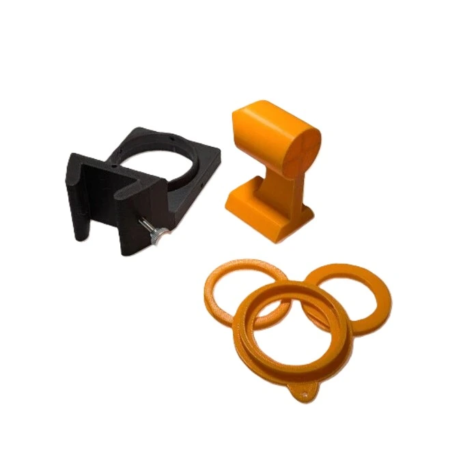
- In Stock
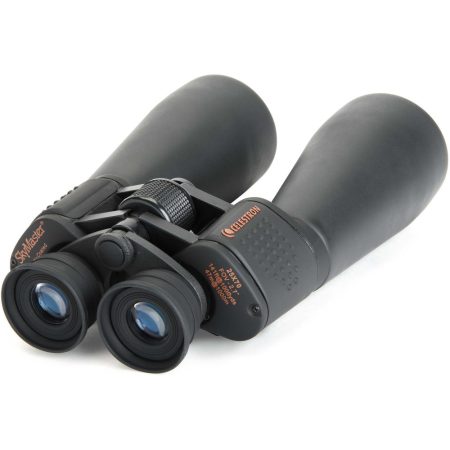
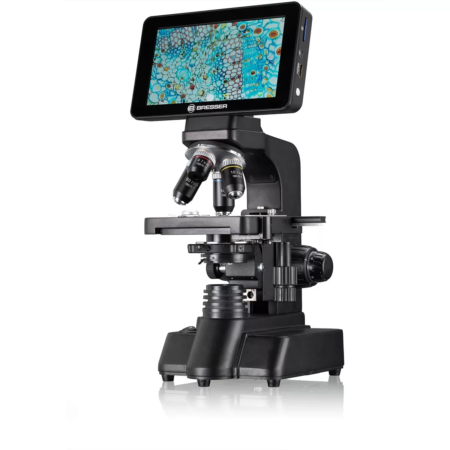
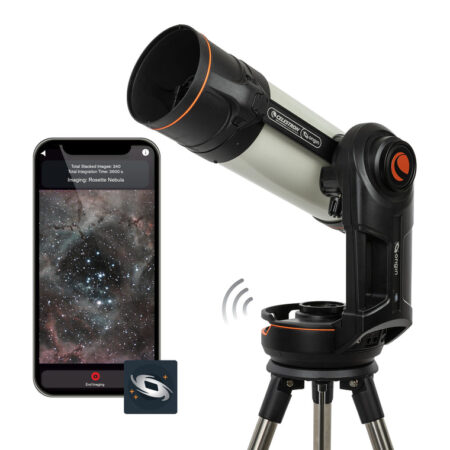
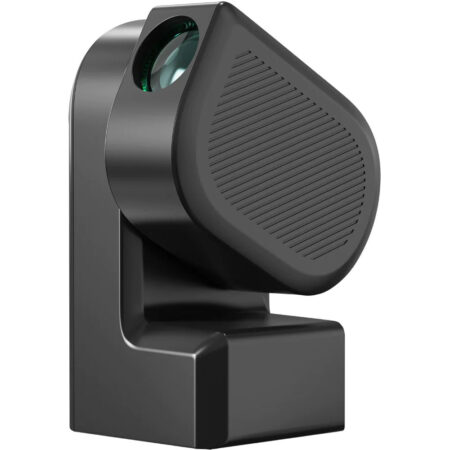
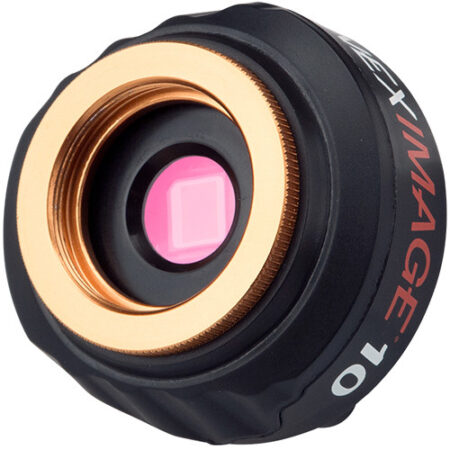
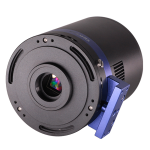
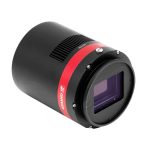
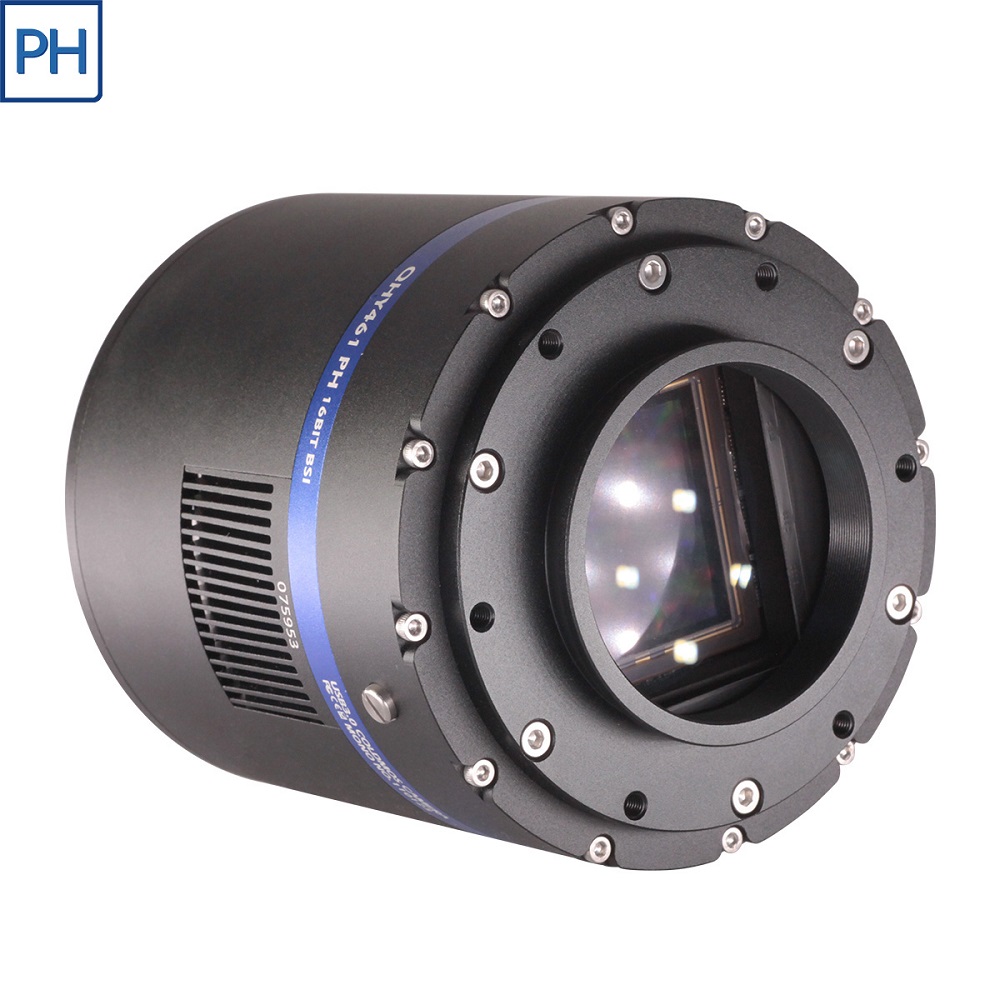

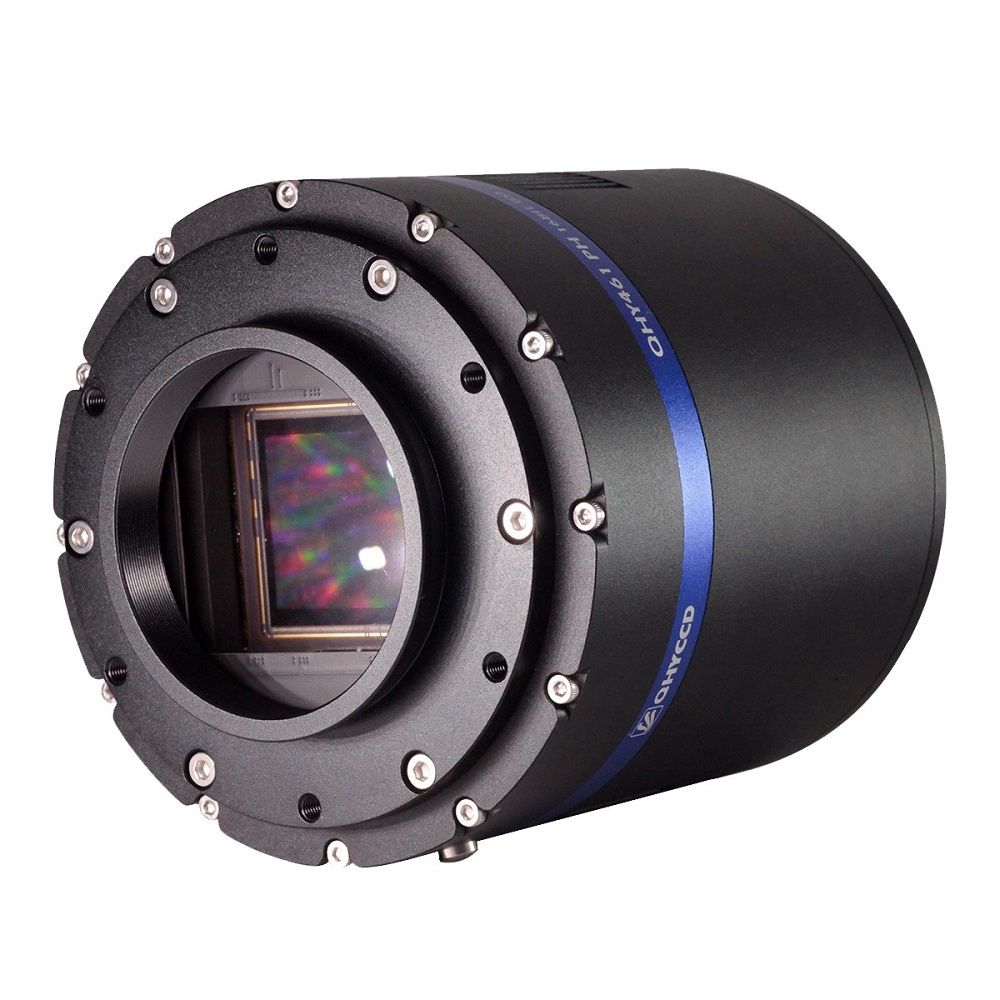
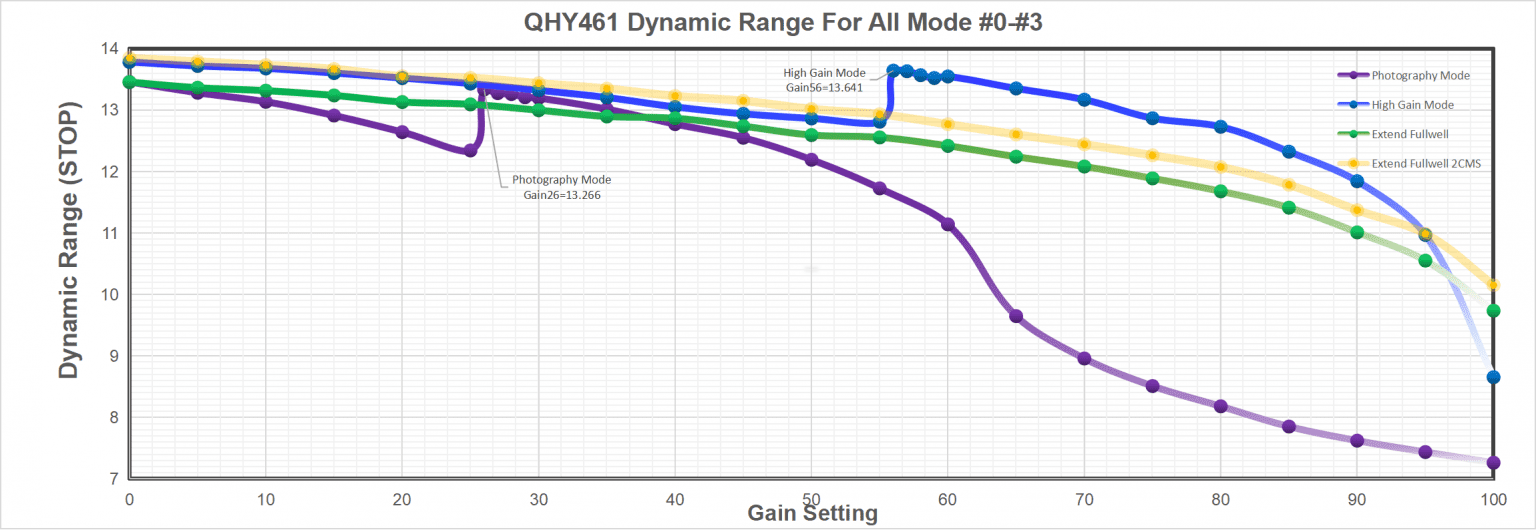
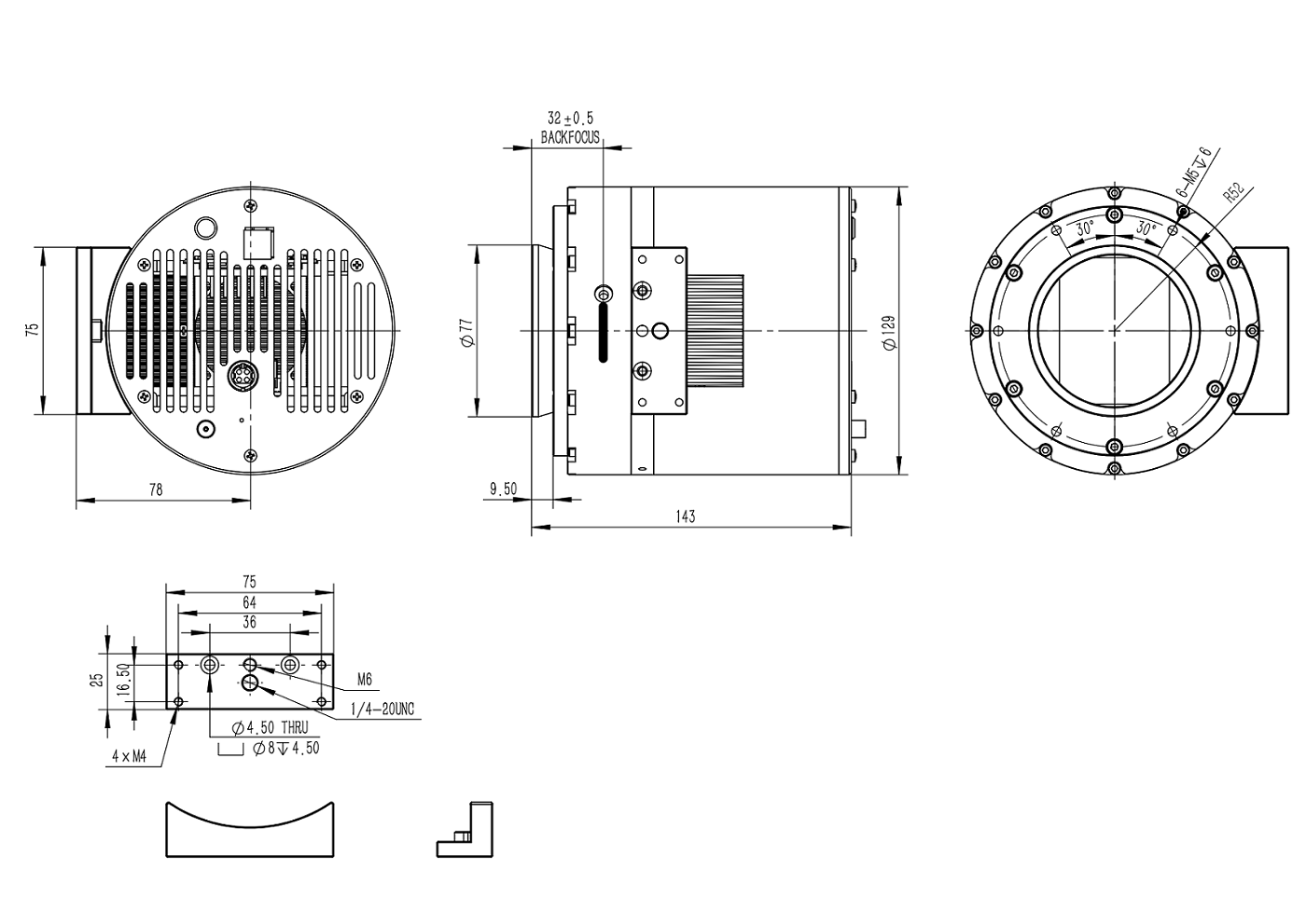
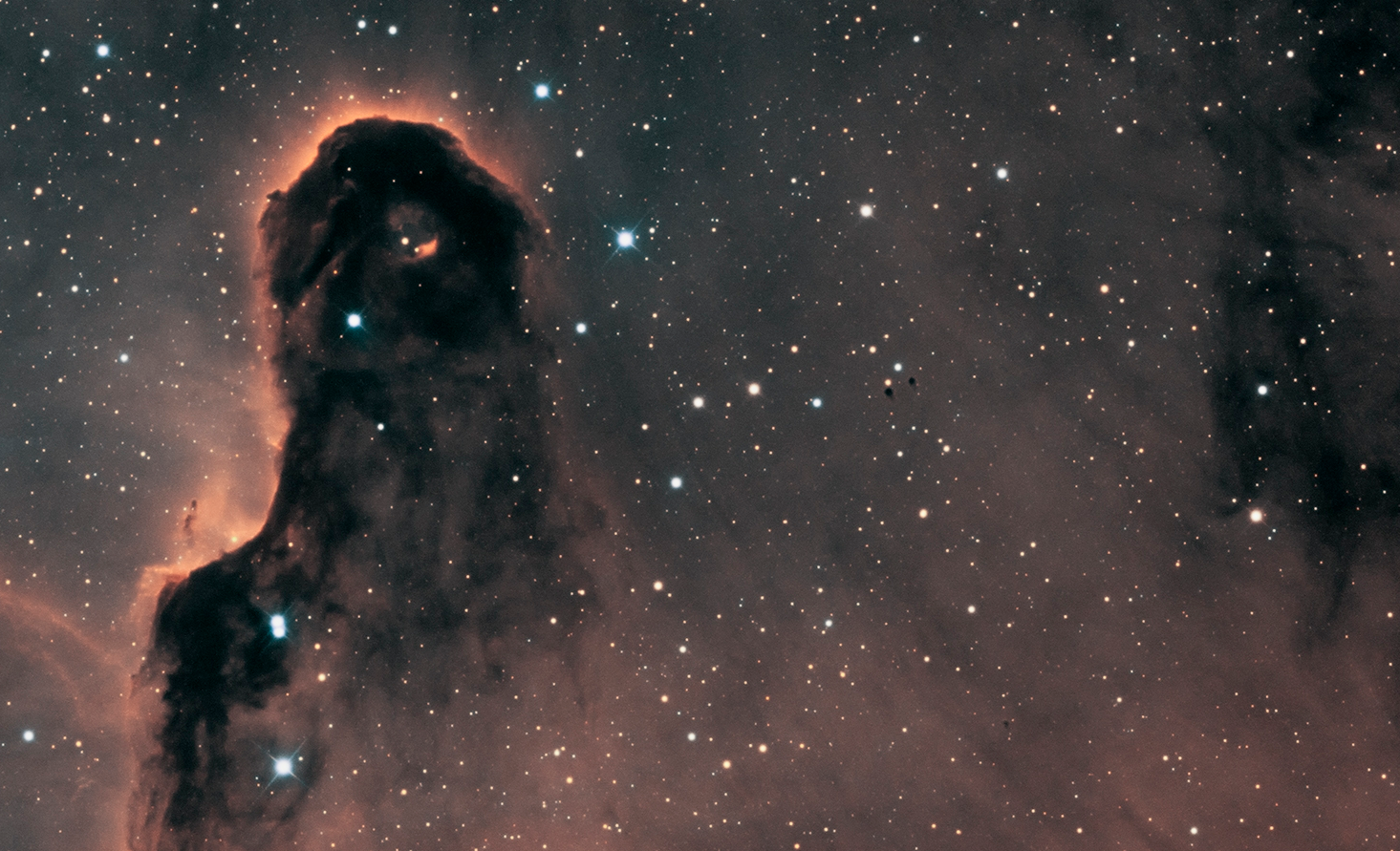
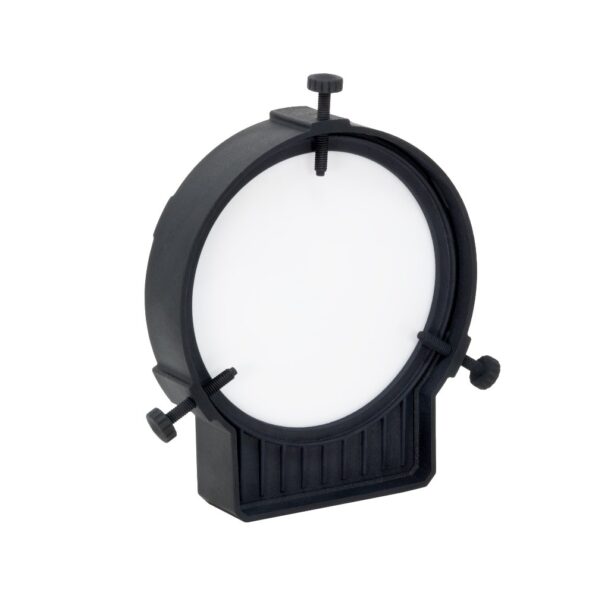
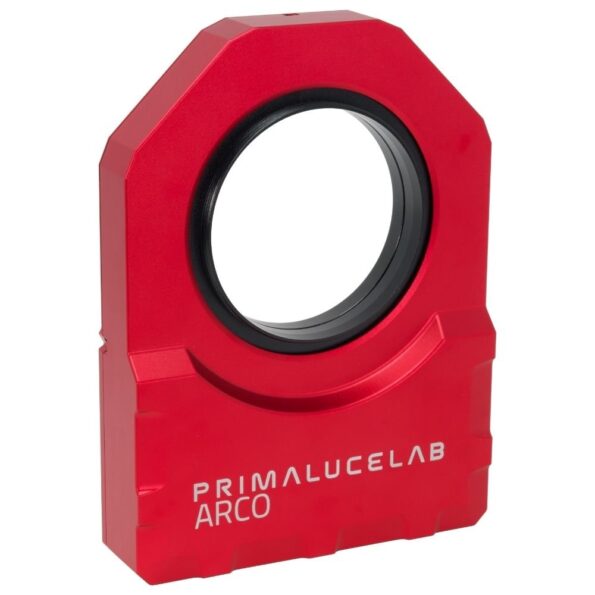
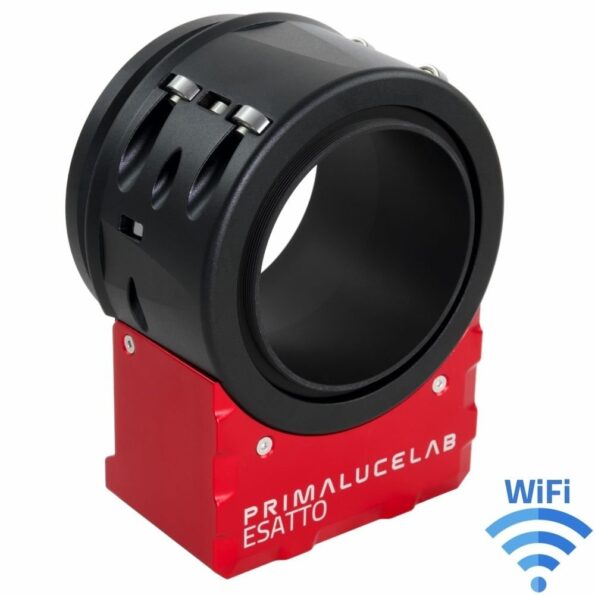

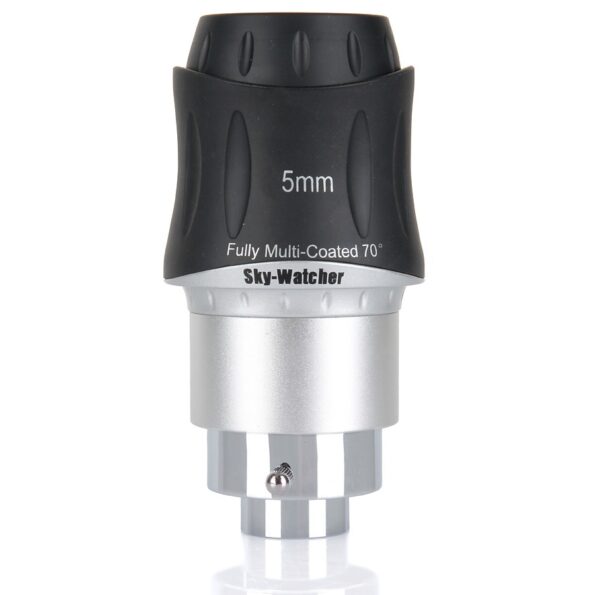
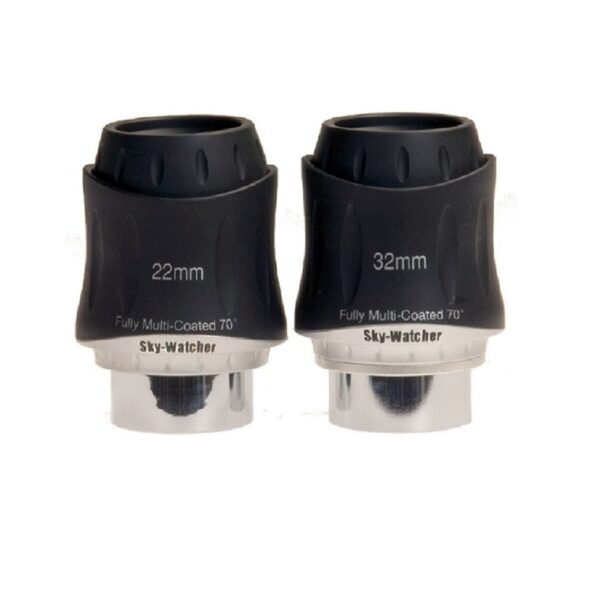
0.0 Average Rating Rated (0 Reviews)